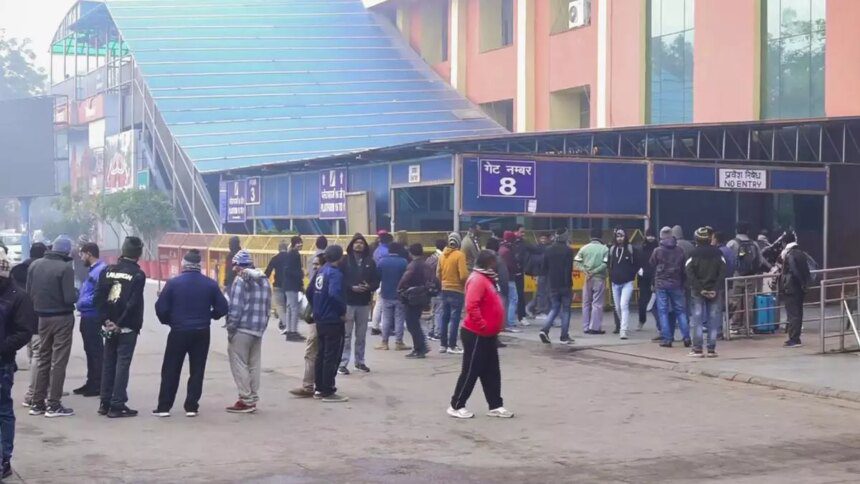A thick layer of fog enveloped the Delhi-NCR region on Sunday morning, significantly reducing visibility and causing disruptions to train services and daily activities.
As a result of the fog, 41 trains departing from various stations in Delhi experienced delays, creating considerable inconvenience for passengers. The India Meteorological Department (IMD) projected a minimum temperature of 10 degrees Celsius for the national capital, where the air quality was noted to be at a ‘very poor’ level.
The Central Pollution Control Board reported that Delhi’s Air Quality Index (AQI) reached 340 at 8 AM today. The AQI scale categorizes air quality as follows: 0-50 is ‘good,’ 51-100 is ‘satisfactory,’ 101-200 is ‘moderate,’ 201-300 is ‘poor,’ 301-400 is ‘very poor,’ and 401-500 is ‘severe.’
In response to the dropping temperatures, many homeless individuals sought refuge in night shelters across Delhi. The Delhi Urban Shelter Improvement Board (DUSIB) established 235 pagoda tents to offer shelter to those in need. Night shelters have been set up in multiple locations.
Foggy conditions were also observed in other parts of North India, including Punjab, Haryana, Uttar Pradesh, and North Rajasthan. In Prayagraj, UP, devotees continued to gather at the Maha Kumbh Mela despite the dense fog. A representative from the IMD forecasted that foggy conditions in Prayagraj could last until January 20. Dr. Soma Sen Roy, an IMD scientist, indicated that visibility was severely affected in Karnal, Haryana, where dense fog persisted, and the forecast predicted a low of 8°C for the day.
In Agra, the effects of the cold spell have been palpable, with the Taj Mahal shrouded in fog for the past several days, rendering it nearly invisible according to locals. The IMD projected that foggy conditions would begin to ease across the North Indian region after January 20. Rainfall was also forecasted for the Western Himalayan region starting January 21, with a subsequent rise in temperatures and a decrease in fog conditions expected.
Dr. Soma Sen Roy also noted that rainfall over the Western Himalayan region is likely to intensify over the following five days, beginning on January 21 and peaking around January 22-23. Rainfall in the plains is anticipated to start on January 22 and continue into the 23rd, accompanied by rising temperatures and possible thunderstorm activity, which will help reduce fog conditions significantly.
In Jammu and Kashmir’s summer capital, Srinagar, cold waves persist, with winter chills intensifying. Fresh snowfall in the Bhalessa region of Doda has transformed the area into a picturesque winter wonderland.










